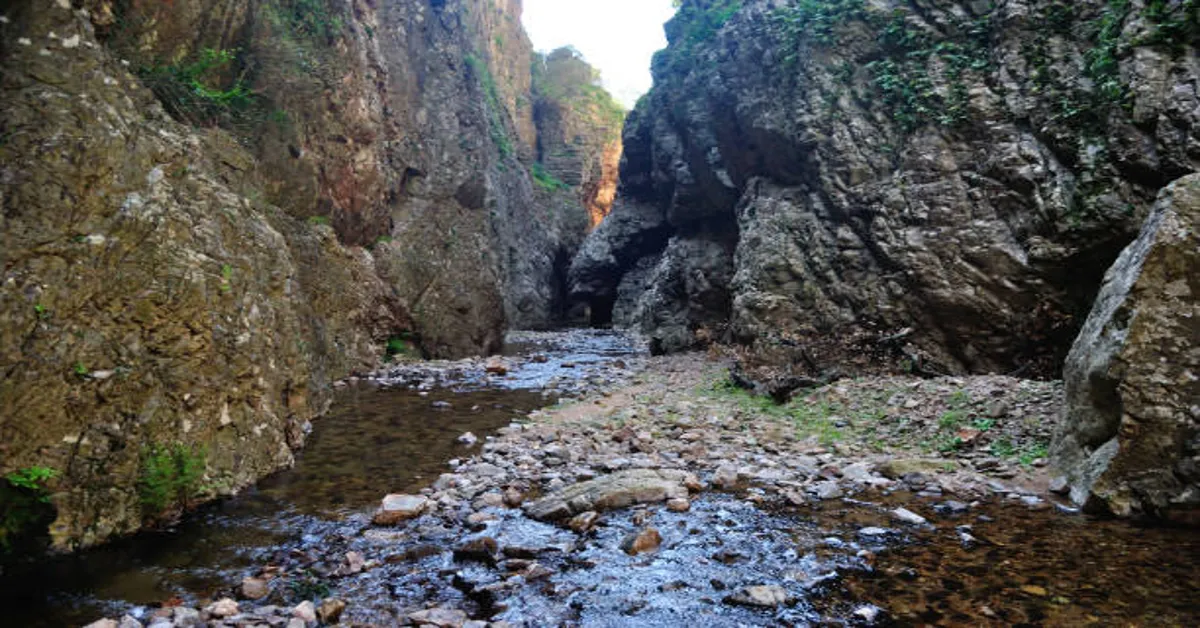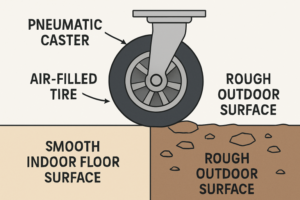Sandhan Valley, popularly known as the Valley of Shadows, is one of the most captivating natural wonders of Maharashtra, India. Nestled in the Sahyadri mountain ranges of the Western Ghats, this valley attracts trekkers, nature lovers, and adventure seekers alike. It is more than just a trekking destination—it is an immersive experience of raw nature, historical significance, geological marvels, and cultural richness.
In this detailed article, we will explore every aspect of Sandhan Valley, including its geographical location, natural formation, trekking routes, camping opportunities, flora and fauna, cultural significance, and practical tips for those planning to visit.
Geographic Location and Overview
Sandhan Valley is located near Bhandardara, in the Ahmednagar district of Maharashtra. It stretches over 2 kilometers in length and descends about 200 feet deep between two rugged cliffs. The narrow rock gorge has some areas where sunlight barely reaches the ground, giving it the title of “Valley of Shadows.”
The valley lies in proximity to famous forts such as Ratangad, Alang, Madan, and Kulang, making it a strategic point for historical warriors and now a hub for trekking routes. Its natural beauty is accentuated by clear skies, gushing streams in monsoon, and panoramic views of the Sahyadris.
| Feature | Details |
|---|---|
| Location | Near Bhandardara, Ahmednagar, Maharashtra |
| Altitude | ~3,000 feet above sea level |
| Length | Approx. 2 km |
| Depth | ~200 feet |
| Best Time to Visit | November to March |
| Known As | Valley of Shadows |
Geological Formation and Natural Beauty
Sandhan Valley is essentially a canyon-like structure formed over millions of years by water erosion. The narrow gorge consists of massive rock walls towering up to several hundred feet, with sections so tight that even daylight struggles to pass through.
During the monsoon, streams trickle down the rocks and pools form within the valley floor, adding a surreal charm. In the winter and early summer months, the valley becomes a trekker’s paradise, offering clear trails and starlit skies for camping.
The rocky terrain showcases basalt formations, typical of the Deccan plateau. This makes the valley not only a natural attraction but also a site of geological importance.
Trekking in Sandhan Valley
Overview
Sandhan Valley is regarded as one of the most challenging treks in Maharashtra. Unlike ordinary treks where you climb uphill, this trek involves descending into the gorge, negotiating rock patches, wading through water, and even rappelling at certain sections.
Key Highlights of the Trek
- Narrow rock passages where trekkers must squeeze through.
- Crystal-clear pools of water, often waist-deep in winter and monsoon.
- Rappelling points up to 45–50 feet.
- Panoramic views of Alang, Madan, Kulang, and Kalsubai peaks.
- Camping under a star-studded sky with minimal pollution.
Trekking Route
The most common trek starts from Samrad village, located near Bhandardara. The trek usually involves:
- Starting Point: Samrad village.
- Initial Trail: Entry into the gorge with rocky terrain.
- Water Bodies: Walking through water pools that vary with seasons.
- Rappelling Section: Descending vertical drops with ropes.
- Exit: The trek either concludes at Dehne village or loops back depending on the chosen route.
| Trekking Detail | Information |
|---|---|
| Starting Point | Samrad Village |
| Difficulty Level | Moderate to Challenging |
| Duration | 5–6 hours (one way) |
| Key Skills Needed | Endurance, rappelling, balance |
| Exit Points | Dehne Village / Return to Samrad |
Camping Experience
Camping in Sandhan Valley is a highlight for many trekkers. The open-air campsites under clear skies offer some of the best stargazing opportunities in Maharashtra. With minimal light pollution, the Milky Way can often be seen with the naked eye.
Trekkers usually camp either inside the valley at designated spots or outside near Samrad village. Evenings are often filled with bonfires, group discussions, and the simple joy of connecting with nature.
Flora and Fauna
The valley is home to a diverse ecosystem typical of the Western Ghats.
- Flora: Wild medicinal plants, shrubs, and seasonal flowers like Karvy (which blooms once in seven years).
- Fauna: Birdwatchers can spot species like Malabar whistling thrush, Indian paradise flycatcher, and crested serpent eagle. Small reptiles, frogs, and occasional mammals like civet cats also inhabit the region.
The surrounding forests provide a green cover that complements the rocky terrain of the gorge, making the trek visually stunning.
Historical and Cultural Significance
Sandhan Valley is surrounded by forts that were historically significant during the Maratha era. Forts like Ratangad, Alang, and Kulang were used as strongholds and watchpoints by Maratha warriors, particularly during the reign of Chhatrapati Shivaji Maharaj.
Culturally, the villages around Sandhan Valley have preserved traditional Maharashtrian lifestyles. The locals still engage in agriculture, cattle rearing, and handcrafts. Their warm hospitality adds a personal touch to trekking experiences, with many villagers offering home-cooked meals and homestay options.
Safety and Preparation
Though enchanting, Sandhan Valley demands preparation and caution.
Safety Tips
- Always trek with a group or certified guide.
- Carry proper trekking shoes with good grip.
- Pack sufficient water and energy bars.
- Avoid visiting during peak monsoon due to flash flood risks.
- Carry first-aid kits and torches.
Essential Gear Checklist
| Gear | Why It’s Important |
|---|---|
| Trekking Shoes | Provides grip on slippery rocks |
| Backpack (lightweight) | Helps carry essentials comfortably |
| Rope & Harness | For rappelling sections |
| Torch/Headlamp | For darker passages in the gorge |
| Sleeping Bag/Mat | For overnight camping comfort |
Best Time to Visit
The ideal season to visit Sandhan Valley is between November and March, when the weather is pleasant and water levels are manageable. Summers can be hot but still doable, while monsoons, though beautiful, can make the trek risky due to slippery terrain and flooding.
Food and Accommodation
- Food: Trekkers often rely on simple village meals that include bhakri, pithla, rice, and dal. The food is basic but nutritious.
- Accommodation: Options include village homestays, camping in tents, or pre-arranged trek organizer setups.
Responsible Tourism
Sandhan Valley is still relatively untouched, and it is crucial to maintain its natural beauty. Trekkers are advised to:
- Carry their waste back instead of littering.
- Avoid plastic packaging wherever possible.
- Respect local culture and customs.
- Travel in smaller groups to minimize ecological impact.
ALSO READ: Movierulz In: An In-Depth Look into the Piracy Website, Its Impact, and Safer Alternatives
FAQs
1. Where is Sandhan Valley located?
Sandhan Valley is located near Bhandardara in the Ahmednagar district of Maharashtra, India, within the Sahyadri ranges.
2. Is Sandhan Valley trek difficult?
Yes, the trek is considered moderate to challenging as it involves water crossing, rappelling, and negotiating narrow rock passages.
3. Can beginners attempt Sandhan Valley trek?
Beginners can attempt it with proper guidance and fitness, but it is best to trek with experienced groups or certified organizers.
4. What is the best time to visit Sandhan Valley?
The best time is from November to March, as the weather is pleasant and water levels are manageable.
5. Are there camping facilities at Sandhan Valley?
Yes, trekkers can camp inside the valley or near Samrad village, with options for tents or village homestays.









